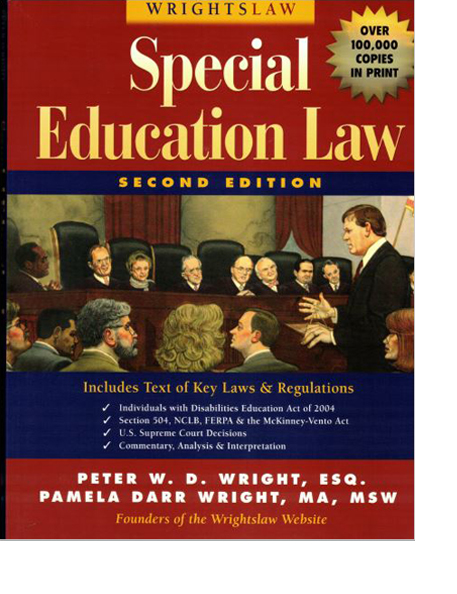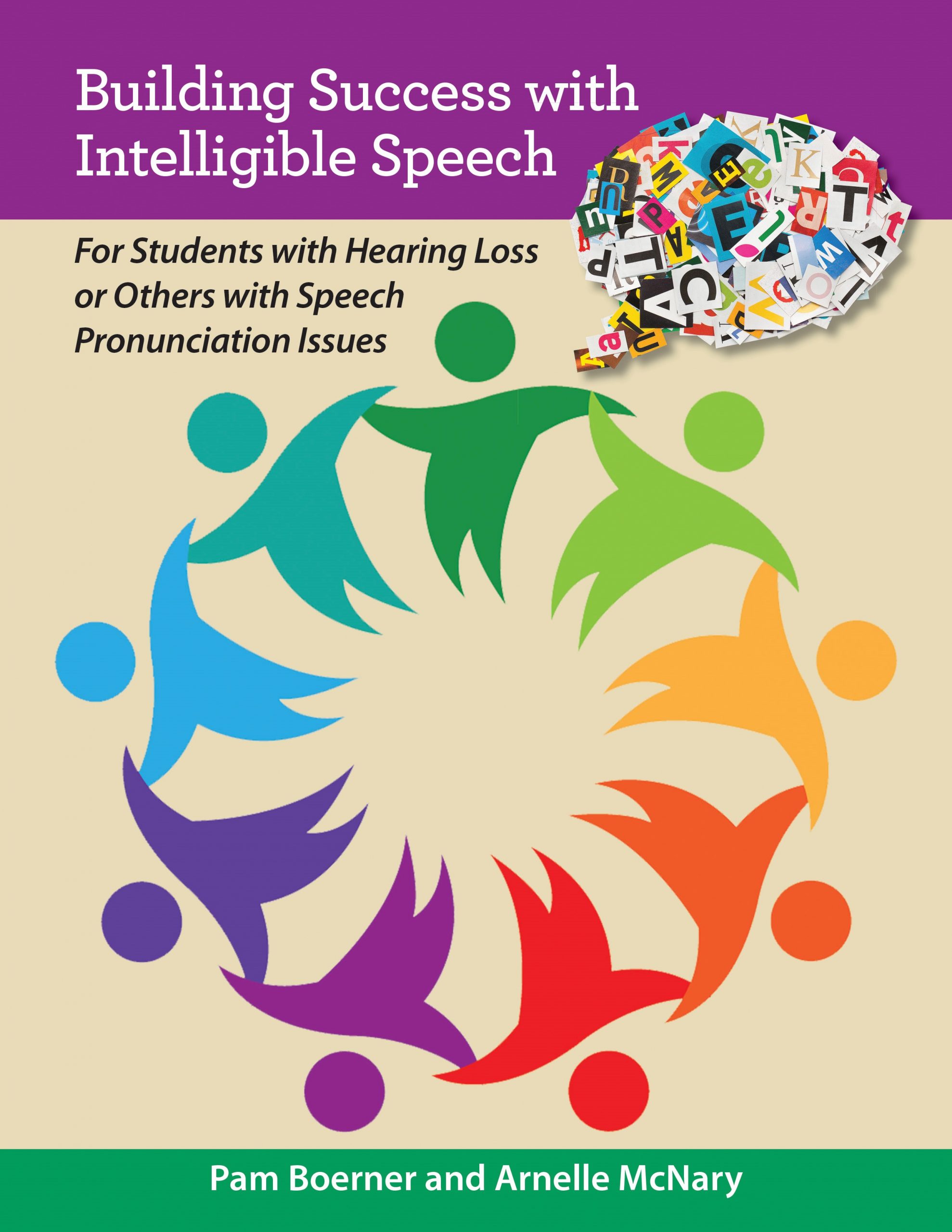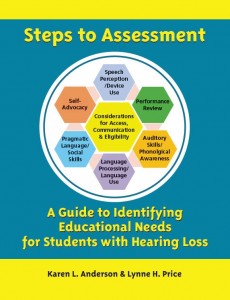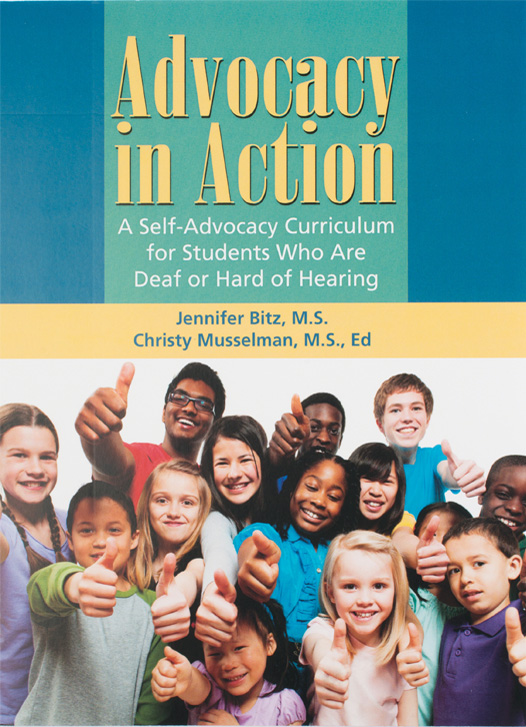Related Products
For Professionals
- Amplification
- Assessment of Student Skills, Challenges, Needs
- Early Childhood: Infants, Toddlers, Preschool
- Hearing Loss – Identification, Impact and Next Steps
- IDEA Law Summary Information
- Language and Speech Development Issues
- Legal Issues in Serving Children with Hearing Loss
- Listening (Auditory Skills) Development
- Planning to Meet Student Needs
- Self-Advocacy Skills for Students with Hearing Loss
- Self-Concept: How the Child with Hearing Loss Sees Himself
- Social Skills
- Speech Perception & Learning
Related Teacher Tools Takeout Items
Eligibility – Even with Good Grades
Tailored Assessment for Students with Hearing Loss:
Identifying Needs to Support Eligibility for Specialized Instruction
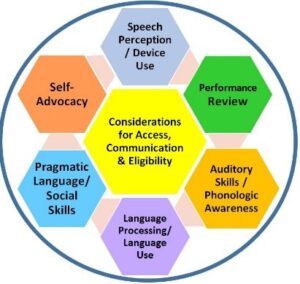 A recent US court case1 made it clear that students with hearing loss must receive an eligibility assessment that identifies areas of suspected need secondary to hearing loss must be evaluated with sufficient intensity to satisfy in depth evaluation. The special factors considerations2 also need to be applied throughout the evaluation process. Furthermore, the LEAD-K3 movement has spotlighted the need for appropriate, tailored assessment of children who are deaf or hard of hearing. The big question from the field of education for children with hearing loss is ‘What assessments should we be using?’
A recent US court case1 made it clear that students with hearing loss must receive an eligibility assessment that identifies areas of suspected need secondary to hearing loss must be evaluated with sufficient intensity to satisfy in depth evaluation. The special factors considerations2 also need to be applied throughout the evaluation process. Furthermore, the LEAD-K3 movement has spotlighted the need for appropriate, tailored assessment of children who are deaf or hard of hearing. The big question from the field of education for children with hearing loss is ‘What assessments should we be using?’
| If the creators of IDEA wanted to make it clear that good grades = no IEP they would have clearly done so – but they did not. |
The IDEA law is consistent about looking at educational performance needs when considering a student’s eligibility for specialized instruction and support. Educational performance is not equivalent to academic performance. While academic performance needs to be considered, it is no more important to consider than the other areas specified by IDEA which are functional, behavioral, social needs and any other performance considerations relevant to the specific child. If a school team only considers grades for eligibility then they are using a sole criterion, which goes against the IDEA requirement that eligibility determinations be made with consideration of at-risk areas as determined by the suspected area of disability.
Our students with hearing loss may ‘look fine’ in the classroom, yet we realize that there are usually subtle differences/needs that, added together, cause academic performance to erode over time. Even ‘good’ students with hearing loss can qualify IF there is someone on the multidisciplinary team who truly understands the impact of hearing loss on development AND uses appropriate assessments to use to tailor the evaluation process to the risk areas of students with hearing loss. Teachers of the deaf/hard of hearing and educational audiologists should have/receive the training needed to feel comfortable in assessment.
The defined purpose of IDEA4: To ensure that all children with disabilities have available to them a free and appropriate education that emphasizes special education and related services designed to meet their unique needs and prepare them for further education, employment and independent living. Performance of the expanded core skills needed for full participation (self-advocacy, communication repair, knowledge about hearing loss, amplification independence, etc.) are necessary for a student to be fully prepared to function as an adult. These are NOT standard areas of evaluation for other students with special needs, but they must be considered as part of a tailored assessment for students who are deaf or hard of hearing.
| Download an updated version of Resources for Identifying DHH Student Needs: Eligibility Assessment and Beyond that reflects some of the information discussed in Steps to Assessment and additional recent tests not included in that book. |
LIST OF RECOMMENDED ASSESSMENTS: The list includes recommendations for both functional and formal assessments for ages 3-5 years and school-age students. In evaluations, it is appropriate to look closely at social/emotional, self-advocacy, and the possibly subtle phonological/morphological awareness and ‘Swiss cheese’ language skills that impact comprehension and reading fluency.
Low average language results reflect the impact of hearing loss, not capability. So often for our students, qualification for specialized instructional services hinges on the results of language assessment. A study5 found that 40% of students with hearing loss have a capacity for higher language levels beyond what test scores indicate. Further6, language learning for students with hearing loss occurs on average at 70%, or just above 2/3, of the rate of children with normal hearing. It is appropriate to anticipate that most children with hearing loss upon school entry will have some delay in expressive and/or receptive language, with greater degrees of hearing loss predicting greater levels of language delay. Also, the nature of hearing loss causes incidental language to be missed whenever a child is further away from about 3-6 feet of the speaker. This typically results in ‘spotty’ or ‘Swiss cheese’ language rather than solid overarching language delays. A student may therefore score higher than his or her actual functional language ability, based on the actual questions asked during the assessment and the individual’s particular vocabulary or conceptual knowledge.
One strong finding from the robust 2015 Outcomes of Children with Hearing Loss Study7 was that normative test scores overestimate the abilities of children who are hard of hearing as they are unlikely to reflect the level of effort that students are expending to maintain competitiveness with peers. Although 80%8 of children born deaf in the developed world receive cochlear implants, the success rate with cochlear implants is highly variable and cannot be assumed to ever ‘fix’ all language development issues, even for children with the best outcomes. We must consistently communicate with our school teams that students with hearing loss are not language disordered. Language, social, and reading delays occur secondary to lifelong decreased access to communication.
| Title II of the American’s with Disabilities Act requires that schools ensure that communication for students who are deaf and hard of hearing is as effective as communication for others through the provision of appropriate aids and services, thus affording an equal opportunity to obtain the same result, to gain the same benefit, or to reach the same level of achievement as that provided to others. |
EVERY student with hearing loss who is going through initial assessment needs to have cognitive testing in order to accurately and appropriately estimate if/how much the hearing loss has impacted development based on the student’s ability compared to peers with typical hearing.9 Students with hearing loss (DHH-only) experience delays secondary to access issues. It is important to know the cognitive ability of each student with hearing loss as their communication access needs must be accommodated so that they reach the same level of achievement as their cognitive peers.
Although testing is performed in a few weeks’ time, evaluation isn’t just about a snap shot, it is about performance over time. Case in point, we received a call from a parent of a 5th grader who is hard of hearing. The child had an IEP in kindergarten and grade 1 and was then dismissed. By the end of grade 4 the reading scores had decreased. The school team wasn’t concerned because the student ‘wasn’t very bad yet.’ Time should be taken to consider the percentile scores on reading across time to see if there has been a decline. When looking at eligibility, dig into prior testing and see if there is evidence of declining percentile ranking in test results over time. For example, in grade 2 did the child score at the 48th percentile in reading as compared to the 26th percentile in grade 4? A public agency must provide a child with a disability special education and related services to enable him or her to progress in the general curriculum. The fact that there is a decline indicates that there are special needs that have not been addressed for the student. Access needs and/or deficits in specific skills foundational to reading comprehension would then need to be identified.
Sometimes administrators make the point that schools must provide educational benefit for students but do not have to guarantee that the student reaches his or her potential. Per the March 2017 decision of the US Supreme Court, schools may not settle for minimal educational progress by disabled students. Educational programs must be reasonably calculated to enable a child to make progress appropriate in light of the child’s circumstances. In the case of students with hearing loss, the expectation would be to provide full access to school communication and specialized instruction to fill in learning gaps PLUS support typical/expected levels of progress in the classroom. Therefore, evaluation must be tailored to identify the access, learning, and functional performance needs of every student with hearing loss so that they can progress equal to their cognitive peers.
References
- 1. Ninth Circuit Court of Appeals, June 1, 2018, S.P. v. East Whittier City School District: https://successforkidswithhearingloss. com/wp-content/uploads/2019/01/Court-case-RE-need-for-thorough-assessment-highlighted.pdf
- 2. IDEA section 300.324(2)(iv): Consider the communication needs of the child, and in the case of a child who is deaf or hard of hearing, consider the child’s language and communication needs, opportunities for direct communications with peers and professional personnel in the child’s language and communication mode, academic level, and full range of needs, including opportunities for direct instruction in the child’s language and communication mode.
- 3. LEAD-K: Language Equality and Acquisition for Deaf Kids. https://successforkidswithhearingloss.com/wp-content/uploads/2019/01/Court-case-RE-need-for-thorough-assessment-highlighted.pdf
- 4. The 2004 IDEA Commentary provides an overall ‘setting the stage’ for the IDEA law; on this webpage.
- 5. Language underperformance in young children who are deaf or hard-of-hearing: are the expectations too low? Journal of Developmental & Behavioral Pediatrics. September 19, 2017. Results2 focused on children with hearing loss who have language levels within the average range on standardized measures. Researchers identified a mismatch between the cognitive level children test at and the expectations for their language skills. In examining the abilities of their 152 young child subjects they found that at least 40 percent have a capacity for higher language levels – beyond what their language test scores indicate.
- 6. The Effect of IQ on spoken language and speech perception development in children with impaired hearing. Cochlear Implants International, (11)1, June, 370-74. A 2010 study3 found that children were learning language at approximately 2/3 of the rate (or 70% of the rate) of their normally hearing peers. Subjects were 62 children ages 5-12 years who used oral communication and attended oral early intervention or school settings. Children in preschool learned language at a faster rate than children attending primary school. On average, children attending preschool were learning at 0.78 of the rate for normal hearing children as compared to a rate of 0.67 for students in primary school. Speech perception scores did not plateau until children had, on average, the language ability of a typically hearing 7-year-old.
- 7. Epilogue: Conclusions and Implications for Research and Practice. Ear and Hearing, 36, 92S-98S. Sole reliance on norm-referenced scores may overestimate the outcomes ofCHH. When the children who are hard of hearing (CHH) were compared with the norm-referenced group on various measures, the differences were small. However, when compared the CHH to a sample of CNH who were matched on age and SES, the size of the effect of HL on language doubled to two thirds of a standard deviation. These results question the sole reliance on comparison to norm-referenced test scores for judging eligibility. Standardized test scores may overestimate CHH as they are unlikely to reflect the level of effort that students are expending (cognitive and perceptual resources) to maintain competitiveness with peers in secondary schooling, where the cognitive demands increase. We need to closely monitor the outcomes of CHH including comparing their performance relative to neighborhood grade-mates. Many CHH in the OCHL study represent the best-case scenario. We might expect that a sample with greater diversity on these dimensions would not perform as well as the OCHL cohort
- Language acquisition for deaf children: Reducing the harms of zero tolerance to the use of alternative approaches. Harm Reduction Journal, 2012, 9-16. Today, 80% of children born deaf in the developed world are implanted with cochlear devices. Due to brain plasticity changes during early childhood, children who have not acquired a first language in the early years might never be completely fluent in any language. If they miss this critical period for exposure to a natural language, their subsequent development of the cognitive activities that rely on a solid first language might be underdeveloped, such as literacy, memory organization, and number manipulation.
- Addressing the Need for Appropriate Use of Norm-Referenced Test Instruments. Supporting Success, December 2017.
Karen L. Anderson, PhD, Director, Supporting Success for Children with Hearing Loss; 2019 Early March Update.
This information is not intended as legal advice. http://successforkidswithhearingloss.com
Sign up to receive Bimonthly Updates from Supporting Success.

